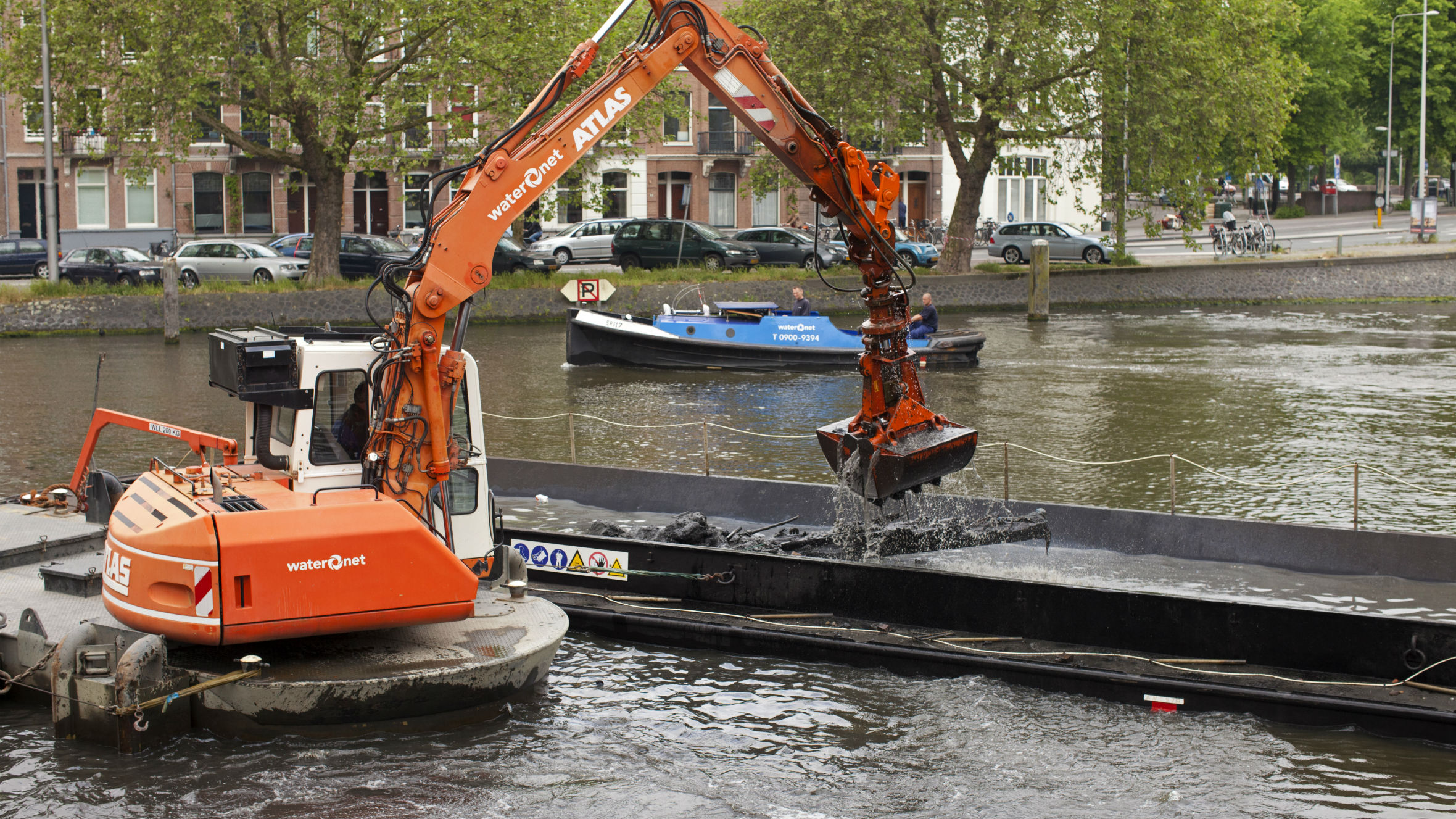Dredging
Waternet dredges polder ditches, waterways and canals. Sand and sludge is removed from the bottom. This ensures that the waterways are deep enough to be used by ships and increase the drainage capacity for rainwater.

Just like roads, ditches in the polder, waterways and canals require maintenance. Sand and sludge sink to the bottom. This accumulates and causes the waterways to gradually become less deep. These waterways need to be dredged so ships can continue to use them. And to ensure they are able to carry off sufficient rainwater to prevent flooding of the surrounding land. Clean and deep waterways are also beneficial for flowers, plants and animals in and around the water.
What do we do with all that sludge?
In a rural area we spread the clean sediment on the land next to the water. This can only be done if there is sufficient space. Once the sediment has dried, grass can grow on the fertile ground. In urban areas, there is less space available for the sediment. And the sediment is often slightly contaminated. It needs to be disposed of properly.
How often do we dredge?
We regularly check the depth of the water bodies. If they are too shallow, they need to be dredged. This needs to be done approximately every 7 to 15 years. Some people are required to dredge their own ditch.